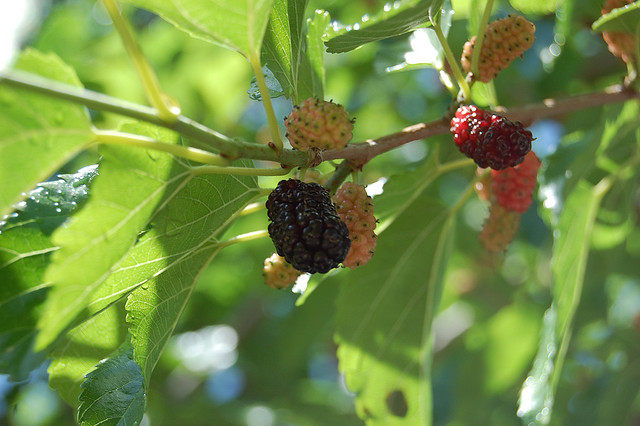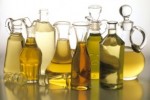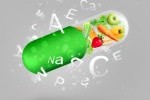In recent years, scientists have been more and more attracted to investigate the benefits of fruits, vegetables, and their natural pigments. Many fruits have been found to possess antineoplastic, anti-inflammatory and lypoxygenase inhibition effects. Some fruits, vegetables and their extracts have shown to be preventive of diet-induced obesity. These include purple corn, black soybean, blood orange, cornelian cherries, blueberries, strawberries and blackberries. The journal of Food Chemistry published a study “Dietary supplementation with purified mulberry anthocyanin suppresses body weight gain in high-fat diet fed mice.”
In this study, Tao Wu at el. hypothesized that mulberry extract, which was found to be high in cyaniding-3-glucoside, cyaniding-3-rutiniside and Pelargonidin-3-glucoside, could have anti-obesity effects. The research team used Chinese mulberry (Morus australis Poir) from the Chinese market. Mulberries contain anthocyanin, which is believed to possess the pharmacological anti-obesity effect. Therefore, anthocyanin was purified from mulberry in this study and named MACN. Mice were divided to 4 groups related to the meals they were given: Low-fat diet (LFD) group, High-fat diet group (HFD) and two other groups that consumed MACN in different doses were HFD group that consumed 40mg of MACN per 1 kilogram food, and HFD group that consumed 200mg of MACN per every kilogram food.
MACN in both groups did not show any influence on amounts of food intake, but it showed suppression of body weight gain in the MACN groups. After 12 weeks of experiment, weight gain was 44.7% higher in HFD mice compared to LFD mice. Administration of MACN at 40mg/kg suppressed body weight gain for the HFD mice by 12% and 200mg MACN group decreased weight even more, 21.5%, compared to the non-supplemented HFD group.
Serum glucose, triglyceride and total cholesterol level were significantly increased for the HFD mice relative to the LFD mice. Although, the MACN group was found to have serum cholesterol and glucose levels lower than HFD group it was still higher than in LFD mice. MACN group was also found to have increased serum triglyceride which was contrary to previous studies done on mulberries.
Morphological analysis revealed that lipid droplet size was the largest in the HFD mice, followed by MACN at 40mg/kg, then MACN at 200mg/kg and then LFD mice.
Additionally MACN showed reduction in lipid, triglyceride and cholesterol fats in the liver, and leptin secretion. Note: Insulin secretion in this study was not altered by MACN.
Anthocyanins are important plant pigments, which have been considered to be associated with a reduced risk of chronic diseases. This study showed that weight, size of subcutaneous fat, cholesterol, and glycogen levels could be controlled in high-fat induced obesity. Additionally, the results also pointed out that the effects are not going to be as high as in a lower-fat fed diet. So to conclude, results of this study suggest that mulberries may help decrease extra body weight, but it is important to remember that scientist used mulberry extract which is a concentrated version of mulberries you would consume at your table. Of note, MACN mice “did not try” to adjust their diet fats and/or add exercise. Perhaps, if you are trying to lose some extra weight, a bowl of mulberries for snack or with your breakfast in addition to your regular exercise will help you to melt your extra pounds away.







